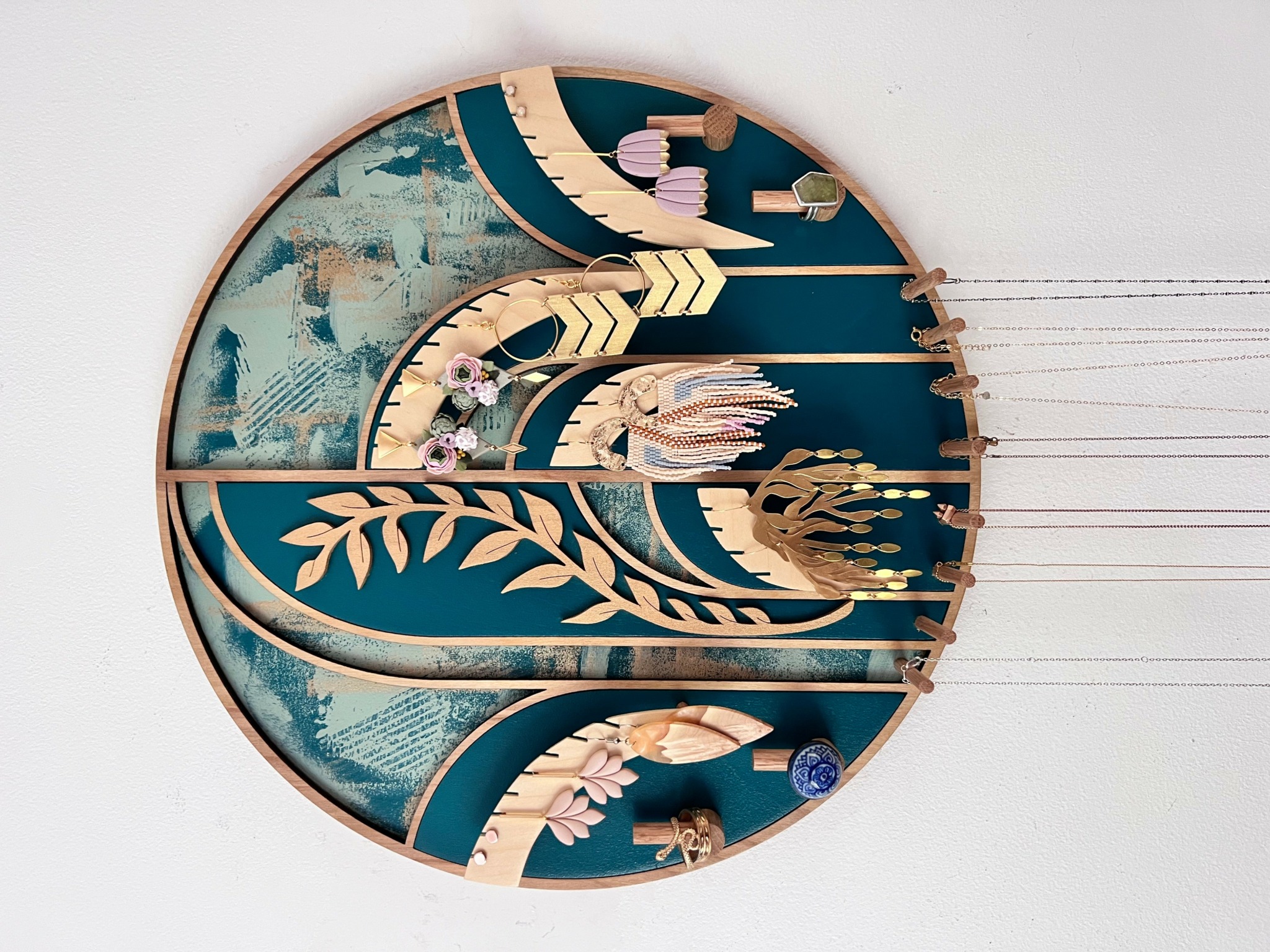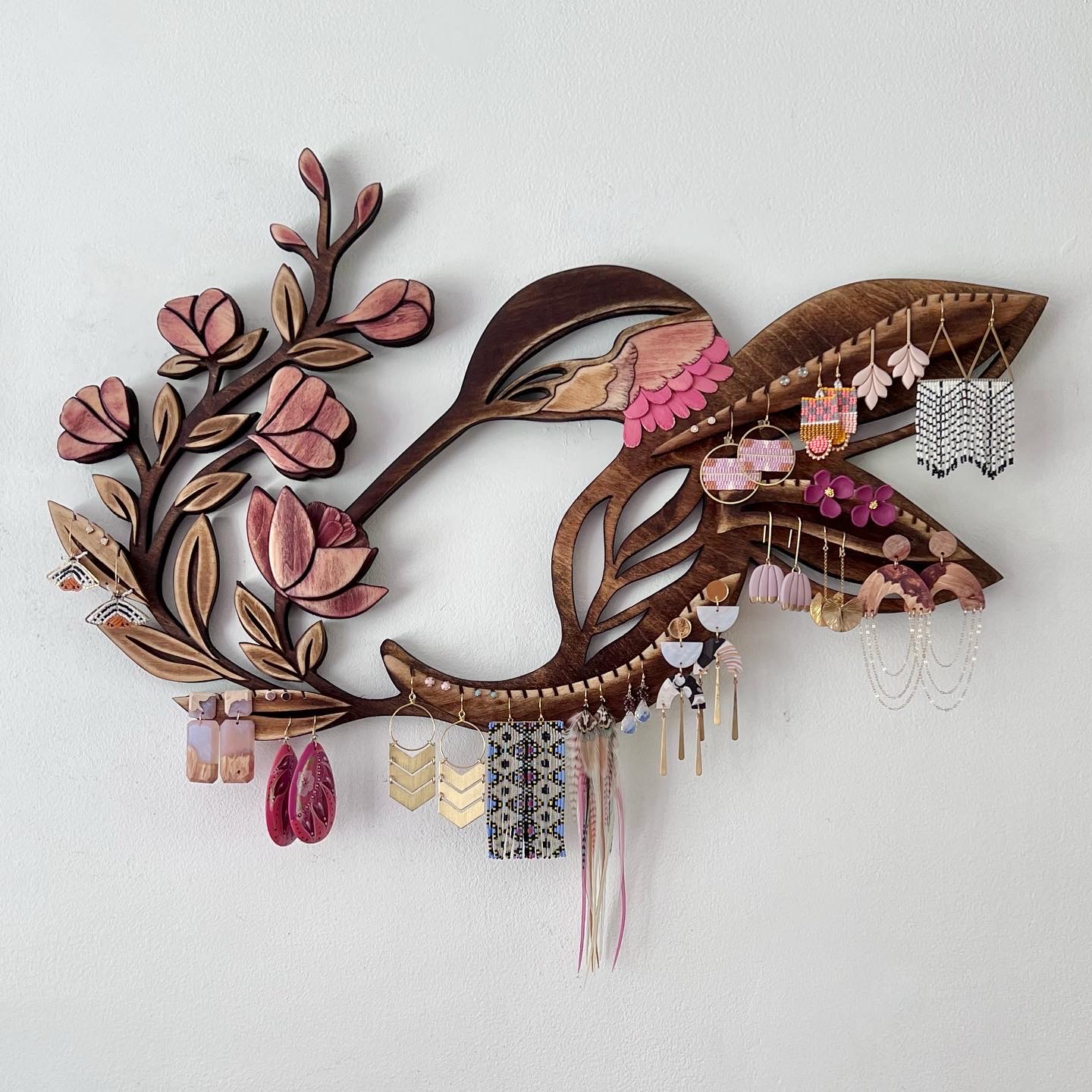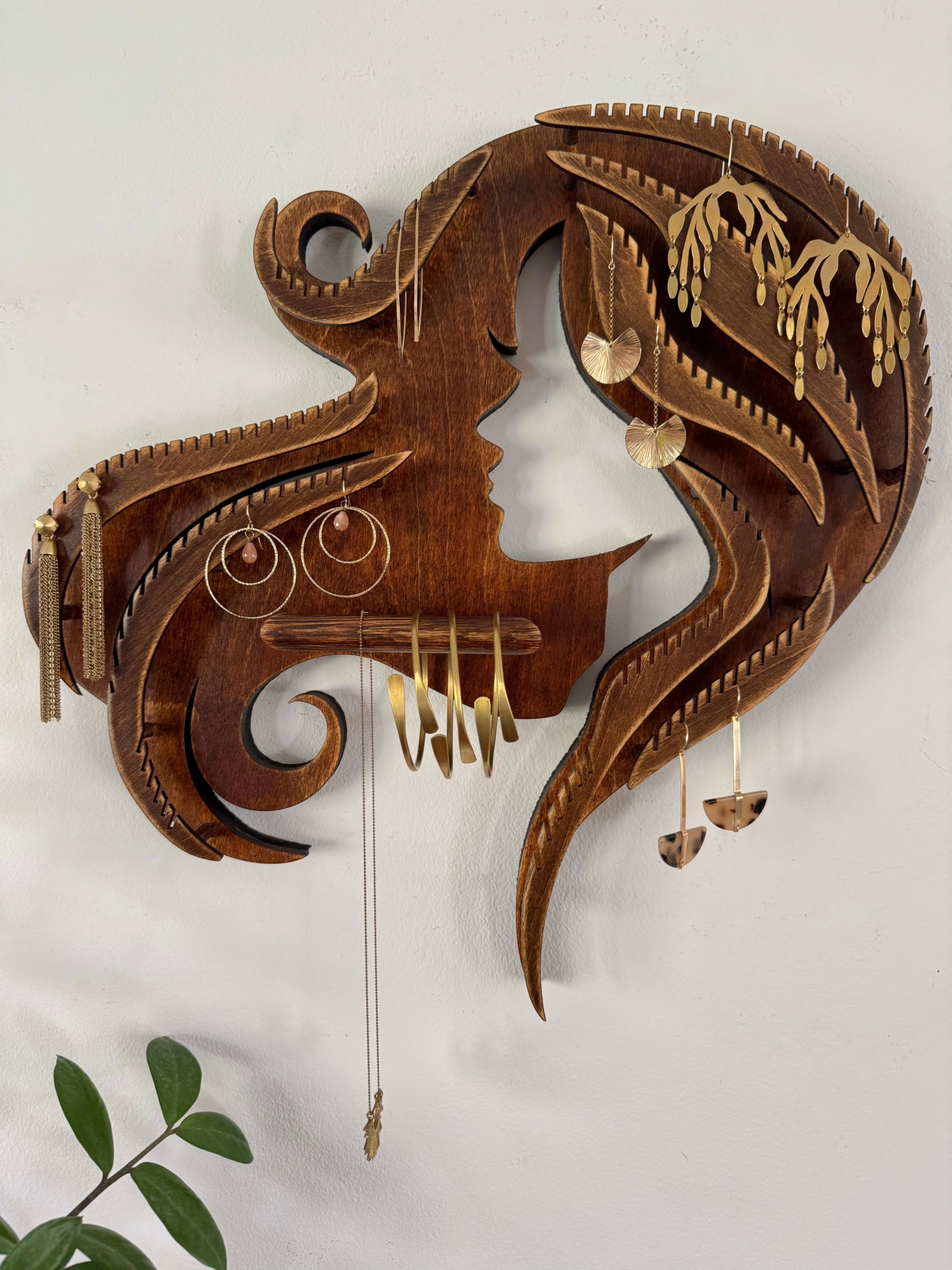Alright – so today we’ve got the honor of introducing you to Lauren Mollica. We think you’ll enjoy our conversation, we’ve shared it below.
Lauren, thanks for joining us, excited to have you contributing your stories and insights. Any thoughts about whether to ask friends and family to support your business. What’s okay in your view?
When I first started getting serious about trying to make something of my handmade business, I opened up a business account on Instagram where I could share my work. I had already been creating displays for people by request for years on the side of my full time job, then on the side of having kids and becoming a stay-at-home parent. But now, with more experience under my belt, I had new goals for my work and my business.
I really wanted to start making designs from my own inspiration and ideas and to explore that without the influence or judgement (whether positive or negative) of my family and friends. My friends and family were supportive, but they weren’t necessarily my customers. By keeping my business Instagram account “secret” at first, it allowed me to explore more fearlessly what my artistic point of view was and to find the people out in the world that truly connected with my work. I wanted unbiased feedback and to find followers of my work that were drawn to it not because they knew me but because they were interested in what I was doing. Because my jewelry displays are such a niche product, I also realized I needed to cast a large net to find my customers. I chose Instagram for my marketing efforts because a photo-based platform would provide me with the ability to communicate through photography that my creations were a blend of art and function. The only way to convey the product in the right way was to show them in context, up on the wall, with jewelry hung on them.
By separating my business from family and friends as I explored my creative voice, it gave me a sense of freedom that I might not have had otherwise. Because of the Instagram platform, I was not only able to find the people that connected with my work on a national level, but also to find customers on a global level. I discovered and connected with a growing community of women woodworkers, both at home in the U.S. and in Canada and men and women woodworkers all over, including India. Because of my connection with jewelry, I also ended up connecting with hundreds of jewelry designers from all over world, some of which were indigenous groups in Canada and Alaska who practice their ancestral forms of jewelry making. I also ended up connecting with other men and women who were interested in woodworking and because of their inquiries about my designs, I began offering my design patterns for purchase as DIY projects. This opened up yet another avenue for sharing my work and another source of income to keep my business afloat. The addition of my digital DIY templates and tutorials broadened my reach and I have now sold my work in 19 different countries which is a very special milestone to me.


Lauren, love having you share your insights with us. Before we ask you more questions, maybe you can take a moment to introduce yourself to our readers who might have missed our earlier conversations?
In 1990, when I was in 7th grade, I discovered my love of woodworking and in particular, the scroll saw, in wood shop class. For a kid who loved to draw, the idea that I could draw anything and then cut it out on the scroll saw to turn a 2D drawing into a 3D object that you could hold in your hand, completely blew me away. After learning to create a few simple projects, we were were given the opportunity to make something on our own and that is when I invented my first wall mounted jewelry display as a gift for my mother. The concept, while rudimentary at that time, was to blend art with function and create something beautiful to hang on your wall that also showcased your personal jewelry collection, free of tangles and easy to get to. It wasn’t until decades later, post college and during a career in the financial industry, that I felt a pull toward finding more time for creativity in my life. With the encouragement and support of a career counselor, I gradually assembled a “workshop,” purchased my first scroll saw and began creating and selling my designs locally by word of mouth. During those initial years, there was a huge learning curve and a lot of stress around time management, but I began to really enjoy the problem-solving, experimental and thoroughly rewarding nature of woodworking and design.
At first it was a creative endeavor on the side of a full time job, but after the birth of my first son and subsequently my second son three years later, it became a form of self preservation; it gave me a sense of purpose and identity outside of motherhood. During the years when the kids were young, there was very little time to do much woodworking so I had to switch the creativity on and off a lot, but it still gave me the intellectual and creative focus I craved. Orders eventually increased to a point where I had to get a few hours of childcare a week in order to fulfill orders. In 2018, when my youngest son started school full time and I was able to spend several uninterrupted hours in my workshop each day, I realized that I couldn’t stop creating even if I tried and that is when things became clear for me. I’d always admired people who said they were designers and that year my woodworking became my avenue for creativity, where I could free all the ideas that were always swirling through my mind. It was a period of time where it was as if the work was taking me for a ride instead of the other way around.
While I have focused almost exclusively on jewelry displays, my overall goal is to never make the same thing exactly the same way twice, not tie myself to trends, but just allow whatever inspiration comes my way to influence what I make. I also try to add special details, usually fairly subtle, but impactful, that make an otherwise simple design that much more special. I like to say that I’m not a perfectionist because I love the imperfectness of handmade but I am still a very detail-oriented person. I am also continuing on fine tuning my methods of construction, staining and finishing so that my displays feel like an extension of fine furniture. My hope is that my work lasts for many years and that they become beloved heirlooms that get passed down to younger generations.
Now that I have been in business since 2018, I would say that my business has now morphed into wanting to explore my work as more of an art form as well as a way to share the love of creating with others. In a world where consuming can often drown out creating, I think there is infinite value to learning to run your own business and to create things with your hands. Not only does woodworking teach resourcefulness, but it also provides a safe space for freedom of expression and a place where the noise of the outside world completely disappears. Time spent in my workshop is time spent experimenting, playing, exploring and creating things that speak to me and I hope speak to others. It is meditative and I feel incredibly present when I’m working. These are the things I want others to get to experience as well. My designs are the product of revisiting the heart and mind of a young girl who enjoyed drawing but never fit into a fine art category; the girl who loved making things with her hands but didn’t necessarily want to be a carpenter. They are also the product of experimentation, play and focus, something we can all benefit from for our mental health in today’s current environment.

How about pivoting – can you share the story of a time you’ve had to pivot?
In my experience of being a stay at home parent and turning a hobby into a business over the last decade or so, there have been so many micro adjustments I’ve had to make to not only my business structure but my own mindset in order to stay afloat and stay sane; however, there are two big moments that really stand out for me.
The first was not necessarily a pivot but a shift in my business model structure. When my order list got so long that I had to start making a waitlist, I began to feel really overwhelmed. I no longer had regular inventory because I was working on one custom order after another.
n order to address the situation, I made the decision to switch my procedure from constantly working on custom orders to designating time to make my own personal collections every month. The goal was to keep working through the custom order log, but also to try to have inventory for those not on the waitlist. It was my way of allowing the space for free flowing creativity that wasn’t directed by a customer’s request. In this way, I think I took some of the pressure of custom orders off and re-collected a joyful part of myself that was getting lost in the mix. I also felt that taking time away from the order log to experiment also helped me explore how I would then come up with my designs for custom orders. In the long term, I believe that leaving room for the experimentation and self expression benefits the quality and creativity of the custom orders.
The second pivot is one I’m right smack in the middle of right now. I would call this my “post-laser machine identity crisis,” which means this phase I’m in right now is going to have to be both a business model and a mindset adjustment. By 2023, my order log had become overwhelming again despite the efforts I’d made to try to manage that. While I was always careful to call it a waitlist or follow up list and never collected any money upfront, the presence of this seemingly never-ending order waitlist was beginning to weigh very heavily on me psychologically. There were at least two full years where the number on my follow up list was 94+. This may not seem like that much, but to a stay at home parent who makes on average of 100-150 pieces in a year, this was quite scary for me personally. It would mean people would wait over a year or longer and that was not what I’d ever hoped would be my customer service profile. I knew I needed to do something.
Having seen some of my favorite scroll saw artists invest in laser machines to assist with their production as well as to implement new techniques and skills, I had begun saving my profits to possibly purchase one and finally I practically wiped out my business account to buy one. Several months later, it arrived. Another huge learning curve for me, it took a lot of time and focus to understand how to use and care for the machine. I also had to hire a graphic designer to convert some of my most popular designs into digital files so that I could save time on labor by replicating many of the design parts on the machine. So there was a lot of learning and preparation to do before I was going to be able to reap the rewards of having the machine.
When I did finally get the machine going on projects, it felt both awesome as well as horrifying to watch it cut out my designs for me. What was I needed for now? There were also endless possibilities of what I could do with this machine which was again amazing and overwhelming at the same time. So as you can can see, the machine brought on a wave of possibility and a wave of confusion and overwhelm. I felt a lot of pressure about what was “handmade” and began to worry that I would lose some of my most loyal followers and customers. I had to revisit who I was in this industry and maybe even what industry I was now a part of. I had to learn some graphic design skill so that I could communicate with the software that interfaced with the machine (of which I had zero experience). So I have now focused on slowing down and taking the time I need to learn the machine and learn to do some of my own graphic design work (a huge work in progress). I realize now that I don’t have to focus solely on being strictly handmade; I can just create and design in whatever new ways I desire and with whatever tools I want. The fact is, at the end of the day, I’m still creating things that didn’t exist before and I’m still using my hands and I still love the process. Now I’m just giving myself the time and space to continue learning new skills and acquiring the tools that open up more ways of exploring my own creative voice in design and art.

Does your business have multiple or supplementary revenue streams (like a ATM machine at a barbershop, etc)?
After receiving inquiries about where I got my design templates from, I realized there was an opportunity for me to start selling my designs to other makers and woodworkers, so over the last year I hired a graphic designer to help me convert photos of my past work into digital files so that I could then offer them for purchase. For these, much of the work is upfront in creating the files, testing the files and then writing the instructions to go with them. This has been a learning curve ensuring that the files work for everyone and that my instructions are clear enough to communicate how to assemble the designs. I currently have 7 of these digital designs available. I also have some DIY jewelry display kits in the works as well. For the kits, I’ll be putting together a box with all the parts that can be painted and or stained and assembled. These kits can be sold separately or in sets for parties or other types of gatherings. I’m hoping that over time, I will also be able to get started on my YouTube channel with online tutorials that accompany the DIY files and the DIY kits as well as introduce some of the techniques I’ve learned over the years. I’m hoping to continue to broaden my brand into a few different categories – art/design products, patterns and templates for makers, teaching/tutorials and eventually, philanthropy.
Contact Info:
- Website: https://www.laurenmollica.com
- Instagram: https://www.instagram.com/laurenmollicawoodworking
- Linkedin: https://www.linkedin.com/in/lauren-mollica-0061305/
- Youtube: https://www.youtube.com/@LaurenMollicaWoodworking
- Other: www.laurenmollica.etsy.com






Image Credits
All images were taken by me.


